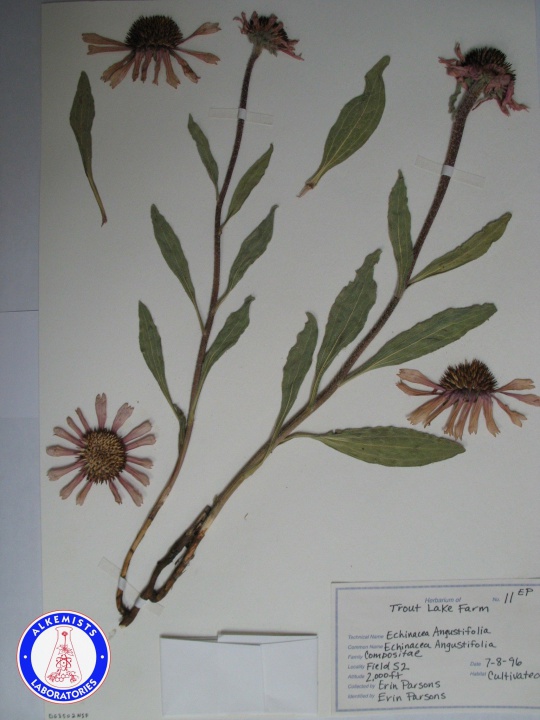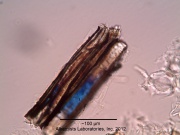Echinacea angustifolia (root)
Contents |
Introduction
Introduction from Wikipedia, the free encyclopedia (http://en.wikipedia.org/wiki/Echinacea_angustifolia, retrieved 02/27/2012).
Echinacea angustifolia (Narrow-leaved purple coneflower, blacksamson echinacea) is a herbaceous plant species in Asteraceae. The plants grow 40 to 70 centimetres (16 to 28 in) tall with spindle-shaped taproots that are often branched. The stems and leaves are moderately to densely hairy.
E. angustifolia blooms late spring to mid summer. It is found growing in dry prairies and barrens with rocky to sandy-clay soils. There are two subspecies: E. a. angustifolia is native from Saskatchewan and Manitoba in the north to New Mexico, Texas, and Louisiana in the south, while E. a. strigosa has a more limited range in Kansas, Oklahoma, Texas, and Louisiana.
The quoted text in this section was licensed for use under the Creative Commons ShareAlike License, version 3.0: http://creativecommons.org/licenses/by-sa/3.0/
Macroscopic Entries
Echinacea angustifolia Botanical Voucher Specimen
Source: Botanical Voucher Specimen Library, Alkemists Laboratories [1]
Microscopic Entries
|
HPTLC Entries
Other Points of Interest
Cite error: <ref> tags exist, but no <references/> tag was found




